In the culinary landscape, high altitude presents a unique set of challenges that affect everything from cooking times to ingredient behavior. As enthusiasts and professionals alike seek to master the art of cooking in these environments, the development of high altitude adapted fryer ovens has emerged as a revolutionary solution. These specialized appliances are not just kitchen gadgets; they’re game-changers for those living and cooking at high altitudes. Let’s delve into the fascinating world of these fryer ovens and their impact on the way we cook in the sky.
Introduction to High Altitude Adapted Fryer Ovens
High altitude adapted fryer ovens are a game-changer for those who love to cook in the mountains or in regions where the elevation is significantly higher than sea level. These specialized appliances are designed to tackle the unique challenges that come with cooking at high altitudes, where the air is thinner and the atmospheric pressure is lower. Let’s dive into the world of these innovative fryer ovens.
In high-altitude kitchens, the lower air pressure affects the boiling point of water, which means that water boils at a much lower temperature than at sea level. This has a direct impact on cooking times and temperatures, as the heat doesn’t penetrate food as effectively. Traditional fryers, therefore, struggle to achieve the desired cooking results, often leading to undercooked or overdone dishes.
High altitude adapted fryer ovens are engineered to address these issues. They come equipped with advanced heating elements and temperature control systems that ensure food is cooked to perfection, regardless of the altitude. These appliances are a testament to the ingenuity of kitchen appliance designers who understand the needs of mountainous regions and high-elevation homes.
One of the key features of these fryer ovens is their ability to maintain a consistent cooking temperature. At high altitudes, the heat from a conventional fryer can escape more quickly, causing fluctuations in temperature. The high-altitude fryer ovens counteract this by using insulation and heat retention technology, ensuring that the heat is contained and directed towards the food.
Another important aspect is the cooking time adjustment. Since the boiling point of water is lower, these fryer ovens often come with programmable settings that allow users to adjust the cooking time and temperature to compensate for the altitude. This not only ensures that the food is cooked properly but also saves energy and time.
The European and North American kitchen appliance markets have been quick to recognize the potential of high altitude adapted fryer ovens. As more people move to mountainous areas or spend time in high-altitude retreats, the demand for these specialized appliances has been on the rise. Manufacturers are responding by offering a variety of models, each tailored to different cooking needs and preferences.
Consumers who invest in high altitude adapted fryer ovens often find that they experience a significant improvement in their cooking results. The ability to achieve a perfect golden crust on fried foods, for example, is something that can be elusive at high altitudes. These fryer ovens not only provide better tasting food but also reduce the frustration of dealing with inconsistent cooking outcomes.
The design of high altitude adapted fryer ovens also reflects a commitment to innovation and technology integration. Many models come with features like digital displays, touch controls, and even smart connectivity, allowing users to monitor and adjust their cooking from a distance. This not only adds convenience but also makes these fryer ovens appealing to tech-savvy consumers who appreciate the fusion of cooking and technology.
Case studies of successful high altitude fryer oven launches have shown that these appliances are not just a niche product. They have found a place in homes, restaurants, and catering services across various regions. The feedback from users has been overwhelmingly positive, with many noting that these fryer ovens have become an essential part of their cooking routine.
Looking ahead, the future of high altitude adapted fryer ovens looks promising. As the awareness of the challenges faced at high altitudes grows, so does the demand for these specialized appliances. Manufacturers are likely to continue refining their designs, introducing even more features that cater to the specific needs of high-altitude cooks.
In conclusion, high altitude adapted fryer ovens are a revolutionary addition to the kitchen appliance market. They not only overcome the unique challenges of cooking at high altitudes but also enhance the cooking experience for those who love to fry. With their innovative features and growing popularity, these fryer ovens are set to become a staple in many high-altitude kitchens around the world.
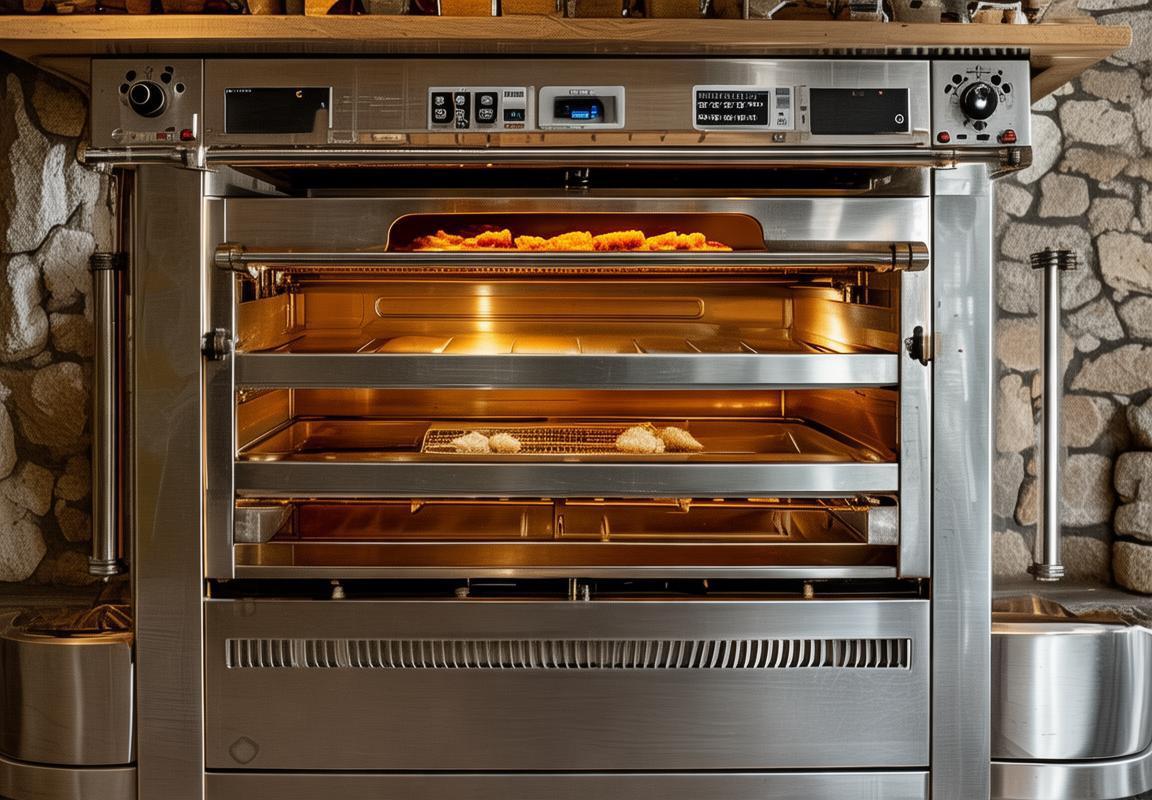
The Unique Challenges of Cooking at High Altitudes
Cooking at high altitudes presents a set of unique challenges that can transform the way we approach culinary traditions. The lower air pressure and thinner atmosphere at higher elevations impact everything from boiling points to the cooking times of various dishes. Here’s a closer look at the distinct hurdles encountered when cooking in high-altitude environments:
-
Reduced Boiling Points: At higher altitudes, the boiling point of water decreases, which means that it reaches its boiling temperature at a lower temperature than at sea level. This can lead to food cooking more quickly and potentially drying out if not monitored carefully. For instance, pasta might cook in half the time it would at sea level, making it crucial to adjust cooking times and temperatures.
-
Increased Cooking Times: Despite the lower boiling point, certain ingredients may take longer to cook at high altitudes due to the lower oxygen levels. Foods that require browning, like meats and vegetables, might not develop the desired color or texture because the Maillard reaction (which causes browning) is slower. This can lead to longer cooking times for these items.
-
Altered Flavors: The decrease in humidity at high altitudes can affect the flavor of dishes. Condensation, which is responsible for adding moisture and richness to some foods, is less likely to occur, leading to drier and less flavorful outcomes. This is particularly noticeable in dishes that depend on moisture to develop depth of flavor.
-
Difficulty with Baking: Baking at high altitudes can be tricky because the lower air pressure causes baked goods to rise more quickly but also to collapse and become dense more easily. The lack of humidity can also contribute to a drier texture in cakes, breads, and other baked goods. Bakers often have to use alternative leavening agents, reduce oven temperatures, and adjust ingredient quantities to compensate.
-
Cooking Temperature Adjustments: Since the air is cooler at higher elevations, the heat from a stove or oven doesn’t feel as intense. This can lead to the perception that the cooking temperature is lower than it actually is. It’s essential to use an oven thermometer and a stovetop thermometer to accurately measure temperatures.
-
Evaporation and Steam Loss: The air is thinner at high altitudes, which means that moisture evaporates more quickly. This can be problematic for dishes that require a certain level of steam or moisture to cook properly, such as sauces or rice. It’s important to keep lids on pots to retain steam and moisture.
-
Gas and Electric Cooking Challenges: High altitudes can also affect the efficiency of gas burners and electric cooktops. Gas burners may not produce the same amount of heat, and electric cooktops might not reach the desired temperature as quickly or consistently. This can require additional time and effort to achieve the same cooking results.
-
Salt and Sugar Adjustments: Since water boils at a lower temperature at high altitudes, the solubility of salt and sugar is affected. This means that you might need to add more salt or sugar to achieve the same taste as you would at sea level. For instance, a cup of coffee might need a tablespoon more sugar or a teaspoon more salt to taste the same.
-
Cooking Techniques: High-altitude cooking often requires a different set of techniques. For example, searing meats to lock in juices might require a slightly hotter pan or a longer time to achieve the same sear. Braising and slow cooking can also benefit from using a pressure cooker, which helps maintain pressure and temperature to compensate for the thinner atmosphere.
-
Psychological Impact: Lastly, the psychological aspect of cooking at high altitudes cannot be overlooked. It can be frustrating for seasoned chefs to adapt their techniques and recipes to new conditions. Patience and experimentation are key to mastering the art of cooking at high altitudes.
These challenges are not insurmountable, but they do require a keen awareness of the altitude’s effects on cooking and a willingness to experiment with new methods and ingredients. With careful attention to detail and some creative adjustments, high-altitude cooks can still produce delicious meals that capture the essence of their favorite dishes.
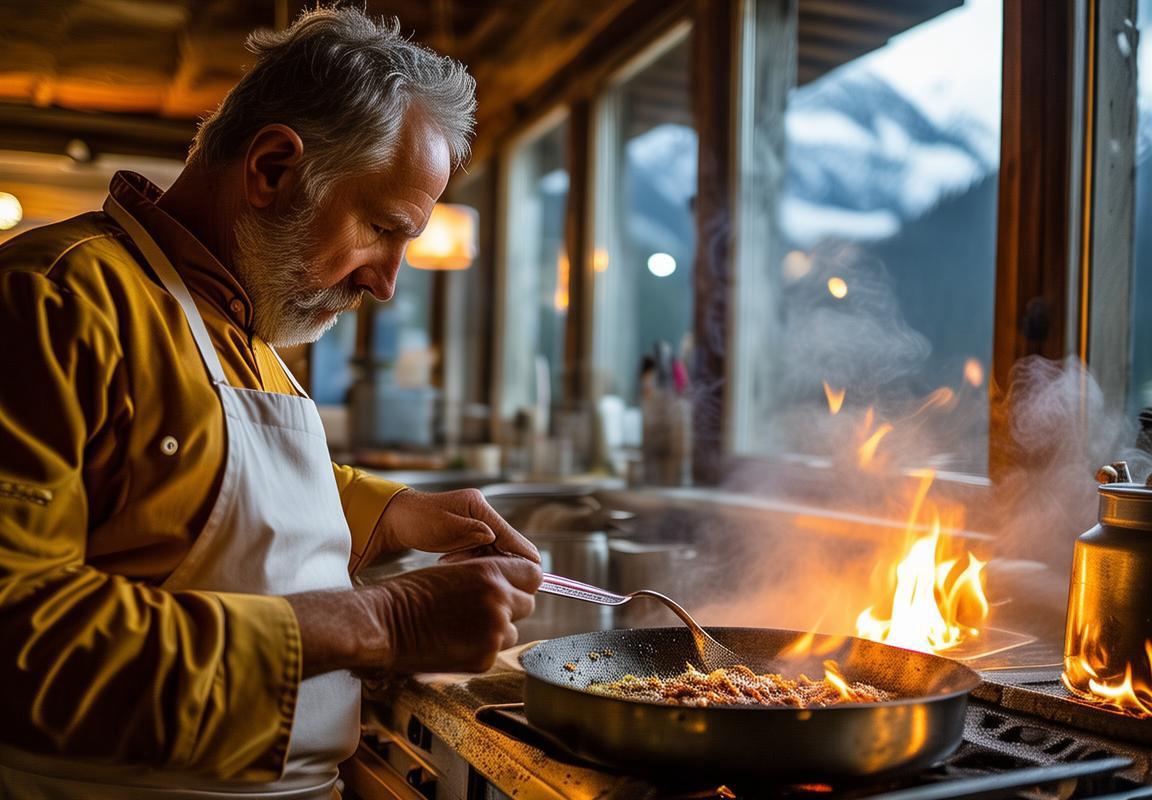
Understanding the Science Behind High Altitude Cooking
Cooking at high altitudes is a fascinating endeavor that pushes the boundaries of traditional culinary practices. To truly understand the science behind this unique cooking experience, we need to delve into the atmospheric conditions and their impact on food preparation.
The key factor at play is the reduced air pressure at higher elevations. As you climb higher, the atmospheric pressure decreases, which in turn affects the boiling point of water. This is a crucial detail, as the boiling point is the temperature at which water turns into steam, and it influences the cooking process.
At sea level, water boils at 212 degrees Fahrenheit (100 degrees Celsius). However, at higher altitudes, such as 5,000 to 8,000 feet (1,500 to 2,400 meters), the boiling point drops to around 200 degrees Fahrenheit (93 degrees Celsius). This means that foods that require a liquid to cook, such as pasta or rice, will cook at a slower rate because the liquid reaches its boiling point at a lower temperature.
This change in boiling point affects the texture and flavor of cooked foods. For instance, when boiling pasta, the reduced temperature means it can take up to 20% longer to cook compared to sea level. This extended cooking time can lead to overcooked pasta, which may be mushy and lose its shape. The slower cooking also allows more of the pasta’s natural starches to be absorbed by the water, potentially altering the taste and mouthfeel.
Similarly, when baking, the lower atmospheric pressure means that the air is less dense. This results in a drier, lighter texture in baked goods. The lower pressure doesn’t necessarily affect the rise of the dough, but it does change how the yeast ferments and how the leavening agents react. Breads and cakes might be lighter and fluffier due to the increased air bubbles, but they can also be more crumbly and less dense.
One of the most significant effects of high altitude cooking is the decreased humidity. At lower elevations, the air is typically more humid, which helps to retain moisture in foods as they cook. At higher altitudes, the dry air can draw moisture out of the food, leading to quicker evaporation. This can result in a drier, less juicy texture in meats and vegetables.
The density of the air also affects the heat transfer during cooking. Because the air is less dense, heat is not transferred as effectively, which means cooking appliances may need to be adjusted. For example, in a high-altitude kitchen, a regular oven might need to be preheated to a higher temperature to compensate for the lower air density, ensuring that food is cooked through to the desired temperature.
In addition to the air pressure and humidity, the decreased oxygen levels at high altitudes also play a role in cooking. With less oxygen available, the combustion process in cooking appliances like gas stoves may not be as efficient. This can lead to a slower burn and less heat output, requiring adjustments to cooking times and temperatures.
Understanding the science behind high altitude cooking is essential for anyone looking to adapt their recipes and cooking methods. It’s not just about adjusting cooking times; it’s about understanding the chemical and physical changes that occur in the food and the environment.
One of the most interesting scientific phenomena related to high altitude cooking is the formation of altitude-induced sugar caramelization. Due to the lower water activity and reduced moisture content, sugar tends to caramelize more readily at high altitudes. This can lead to dishes that have a deeper, more complex flavor profile compared to those cooked at sea level.
Another important scientific consideration is the effect of altitude on food preservation. The dry conditions and lower temperatures at higher elevations can actually be beneficial for preserving certain types of food, such as fruits and vegetables, which may last longer due to the slower rate of spoilage.
In conclusion, the science behind high altitude cooking is a complex interplay of atmospheric conditions that influence the cooking process, the texture, and the flavor of foods. By understanding these factors, chefs and home cooks can navigate the unique challenges of cooking in the thinner air and create delicious meals that reflect the terroir and cultural context of their high-altitude kitchens.
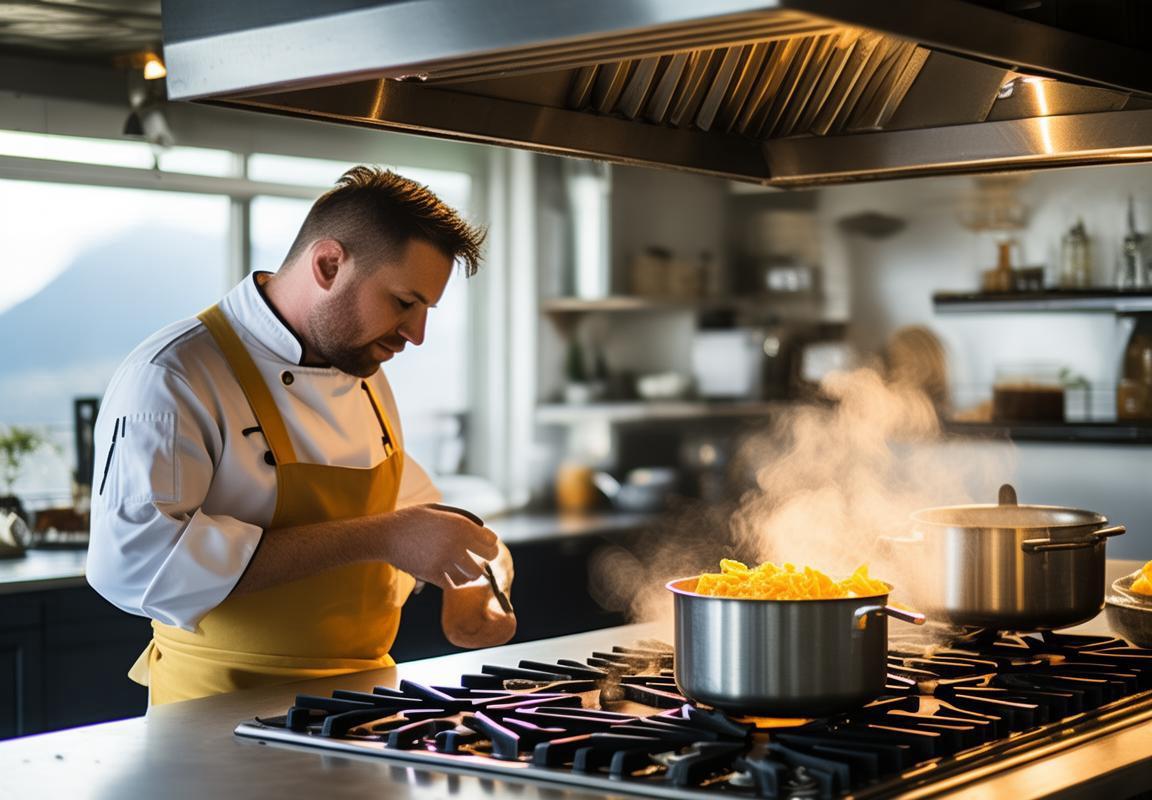
Features of High Altitude Adapted Fryer Ovens
High altitude adapted fryer ovens are designed with specific features that cater to the unique conditions found at elevated elevations. These features are engineered to ensure that cooking remains efficient and enjoyable, despite the thinner air and lower atmospheric pressure. Here’s a closer look at some of the key features that make these fryer ovens stand out:
-
Increased Cooking Power: One of the primary challenges at high altitudes is the decrease in atmospheric pressure, which can lead to a lower boiling point of water. High altitude adapted fryer ovens often come with higher wattages or more powerful heating elements to maintain the necessary cooking temperatures, even when water boils at a lower temperature.
-
Advanced Thermostat Control: To counteract the fluctuations in cooking times and temperatures, these ovens are equipped with sophisticated thermostat systems. These controls allow for precise adjustments to maintain a consistent and optimal cooking environment.
-
Enhanced Heat Distribution: Cooking at high altitudes requires a more even heat distribution to prevent hotspots and undercooked food. High altitude fryer ovens often feature improved heat distribution systems, such as convection fans or multiple heating elements, to ensure that food is cooked uniformly.
-
Adjustable Fryer Basket Depth: The decreased boiling point of water can lead to oil boiling over more easily, so these ovens may offer adjustable fryer basket depths. This feature allows users to control the amount of oil and food that can be safely cooked at once, reducing the risk of oil splatter.
-
Safety Features: Safety is a top priority in high altitude adapted fryer ovens. These models often come with features like automatic shut-off mechanisms, oil level sensors, and overheat protection to prevent accidents and damage to the appliance.
-
Specialized Cooking Modes: Many high altitude fryer ovens are designed with specific cooking modes that are tailored to the needs of high-altitude cooking. These modes might include adjustments for altitude, different types of cooking oils, and even settings for cooking at varying altitudes.
-
Ergonomic Design: Recognizing that high-altitude chefs may need to use their fryer ovens for extended periods, these appliances are often designed with ergonomics in mind. This includes features like easy-to-use controls, non-slip feet, and a sleek design that takes up less space in limited kitchen environments.
-
Energy Efficiency: Despite the need for increased power, high altitude adapted fryer ovens are designed to be energy-efficient. They use materials and technologies that minimize energy consumption while still delivering the required cooking performance.
-
Easy Cleaning: Cleaning is a crucial aspect of kitchen appliances, and high altitude fryer ovens are often designed with easy-to-clean surfaces and removable parts. This not only makes maintenance simpler but also helps to maintain hygiene in the kitchen.
-
Sturdy Construction: To withstand the rigors of high-altitude cooking and the potential for increased vibration, these ovens are constructed with durable materials. They are built to last, ensuring a long service life and reliability.
-
User-Friendly Interface: The control panels on high altitude adapted fryer ovens are designed to be intuitive, with clear displays and straightforward navigation. This ensures that even those new to high-altitude cooking can operate the appliance with ease.
-
Portability: For those who might move to different altitudes or for those with limited space, some high altitude fryer ovens are designed to be portable. They often come with lightweight construction and features that make them easy to transport and store.
These features are a testament to the innovative engineering that goes into creating appliances that can perform effectively in the unique conditions of high-altitude environments. From the power and precision of their heating systems to their thoughtful design elements, high altitude adapted fryer ovens are a testament to how technology can adapt to meet the needs of diverse cooking conditions.
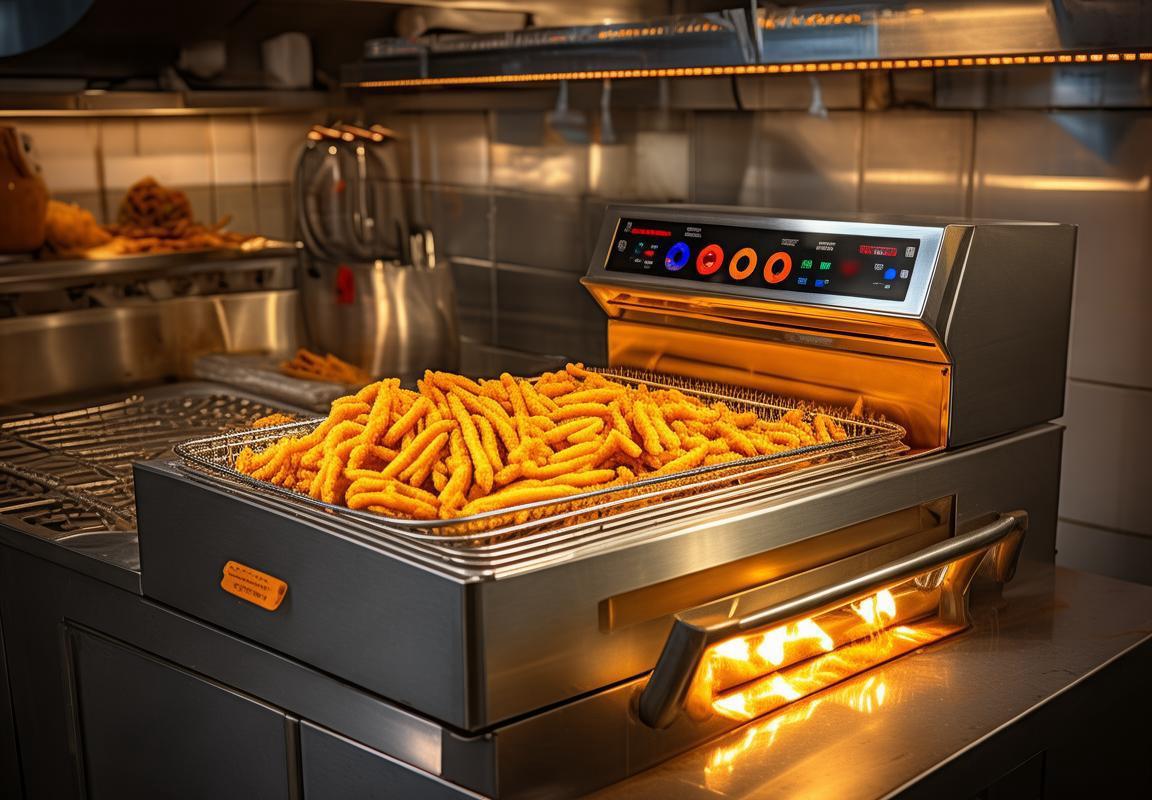
Market Trends in the European and North American Kitchen Appliance Industry
In the dynamic landscape of kitchen appliance markets, both Europe and North America are witnessing distinct trends that shape the industry. From smart technology integration to eco-friendly designs, here’s a glimpse into the current market trends:
Energy Efficiency and SustainabilityConsumers in both regions are increasingly conscious of energy consumption and environmental impact. As a result, kitchen appliances are becoming more energy-efficient, with many manufacturers focusing on sustainability certifications and eco-friendly materials. This shift is reflected in the popularity of appliances with A+ energy ratings in Europe and Energy Star ratings in North America.
Smart ConnectivityThe integration of smart technology in kitchen appliances has taken off, allowing users to control their devices remotely and streamline their cooking processes. Smart ovens, refrigerators, and dishwashers are becoming standard, offering features like automated shopping lists, temperature control, and energy usage tracking. In Europe, the demand for smart kitchen appliances is driven by the tech-savvy population, while in North America, the emphasis is on convenience and efficiency.
Health and WellnessThere’s a growing trend towards health-conscious appliances that support a balanced diet. This includes ovens with pre-programmed healthy cooking settings, air fryers that reduce the need for oil, and sous-vide machines that ensure even cooking and nutrient retention. European consumers are particularly interested in appliances that promote healthy eating habits, while in North America, there’s a blend of interest in both health and convenience.
Design and AestheticsThe kitchen is no longer just a functional space; it’s a reflection of personal style. Kitchen appliance manufacturers are responding to this by offering sleek designs and customizable finishes. European markets are seeing a surge in minimalist and modern aesthetics, while North American consumers are embracing both contemporary and traditional designs, often blending them in unique ways.
Customization and PersonalizationTailoring appliances to individual preferences is becoming more common. This includes variable cooking temperatures, adjustable settings for different types of food, and modular designs that can be adapted to changing kitchen layouts. In Europe, there’s a trend towards bespoke kitchen solutions, while in North America, the emphasis is on modular appliances that can be mixed and matched to suit individual tastes.
Rise of Smart KitchensThe concept of a smart kitchen is gaining traction, with appliances that can communicate with each other and learn from user habits. In Europe, smart kitchen ecosystems are being developed by major appliance brands, offering seamless integration and control. In North America, the focus is on individual smart appliances that can be managed through a single platform or app.
E-commerce GrowthThe rise of e-commerce has changed the way consumers purchase kitchen appliances. Online sales are on the rise in both Europe and North America, with more consumers turning to online marketplaces for convenience and competitive pricing. This shift is prompting manufacturers to enhance their online presence and offer more digital marketing and customer service support.
Innovation in MaterialsInnovation isn’t just about technology; it’s also about materials. Both European and North American markets are seeing a push towards sustainable and durable materials, such as recycled plastics, stainless steel, and bamboo. These materials not only contribute to the sustainability movement but also offer long-lasting performance.
Gourmet and Specialty AppliancesThe interest in gourmet cooking has led to a surge in specialty appliances, such as sous-vide machines, espresso makers, and wine cellars. European consumers are particularly keen on these items, while in North America, there’s a broader interest in both high-end and everyday appliances that can enhance the cooking experience.
Focus on SafetyWith the increased use of kitchen appliances, there’s a heightened focus on safety features. This includes anti-tip technology in ovens and stovetops, child locks on refrigerators, and improved ventilation systems. Both European and North American consumers are looking for appliances that prioritize safety without compromising on performance.
In conclusion, the kitchen appliance industry in both Europe and North America is evolving with a strong emphasis on sustainability, smart technology, health, and personalization. As these trends continue to shape the market, manufacturers are tasked with innovating and adapting to meet the changing demands of consumers.
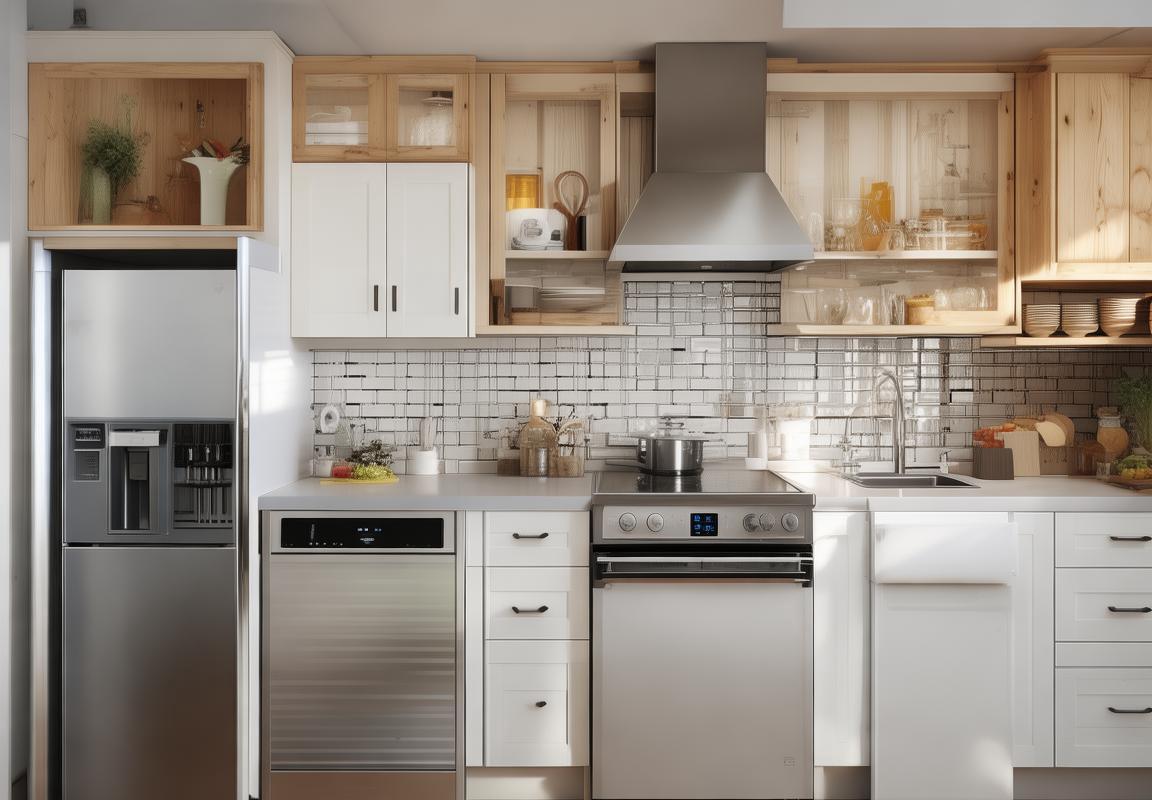
Consumer Benefits and Market Demand
Cooking at high altitudes presents a set of challenges that are unique to the environment’s thinner air and lower oxygen levels. These factors can significantly impact the cooking process, from boiling points to the way ingredients react with heat. Here’s a deeper look into the science behind these challenges:
At higher altitudes, the air pressure decreases, which means that the boiling point of water is lower than at sea level. This means that water reaches its boiling point at a temperature below the usual 100 degrees Celsius (212 degrees Fahrenheit), often around 90 degrees Celsius (194 degrees Fahrenheit) at 2,400 meters (7,874 feet) above sea level. This lower boiling point affects all cooking methods that rely on water, including boiling, steaming, and simmering, as these processes require water to reach a higher temperature to cook food effectively.
The reduced air pressure also affects the way heat is transferred. Convection, the process by which heat moves through a gas or liquid, becomes less efficient at higher altitudes. This means that cooking times may need to be adjusted, as the heat doesn’t disperse as quickly, leading to slower cooking processes. The lower oxygen levels can also impact the Maillard reaction, which is responsible for the browning and flavor development in cooked foods, potentially leading to dishes that are less flavorful or not as browned as expected.
The density of the air at high altitudes is also lower, which can affect the way heat is retained in the kitchen. This means that appliances may need to work harder to maintain consistent cooking temperatures, especially for ovens and stovetops. Additionally, the thinner air can cause a faster evaporation of moisture from foods, which can lead to drier outcomes if not compensated for in cooking techniques.
High altitude adapted fryer ovens are designed to address these specific challenges. They often feature technology that allows for precise temperature control, ensuring that the cooking process remains effective despite the lower boiling points and slower heat transfer. These ovens might also include features like a convection setting to help distribute heat more evenly and quickly.
In the European and North American kitchen appliance industry, several trends are shaping the market for high altitude adapted fryer ovens:
-
Smart Technology Integration: Modern kitchen appliances are increasingly incorporating smart technology, allowing users to control their fryer ovens remotely via smartphones or tablets. This trend is likely to continue, as consumers seek convenience and the ability to manage their appliances more efficiently.
-
Energy Efficiency: With growing environmental concerns, there is a strong market demand for energy-efficient appliances. High altitude adapted fryer ovens that consume less energy while maintaining performance are likely to gain popularity.
-
Health and Wellness: As consumers become more health-conscious, there’s a trend towards appliances that offer healthier cooking options, such as air fryers and ovens that use less oil. These appliances may become more sought after in the high altitude market.
-
Customization and Personalization: Consumers are looking for appliances that can be customized to their specific needs. This includes adjustable settings for cooking times and temperatures, as well as features that cater to a variety of cooking styles and preferences.
-
Sustainability: The sustainability movement is influencing the appliance industry, with a growing number of consumers seeking products that are made with eco-friendly materials and have a smaller carbon footprint.
Consumer benefits and market demand for high altitude adapted fryer ovens are multifaceted:
-
Improved Cooking Outcomes: These ovens ensure that food is cooked to perfection, even at high altitudes, where traditional cooking methods can be less effective.
-
Time and Energy Savings: With precise temperature control and efficient cooking processes, these ovens can save consumers time and energy, making them attractive to busy households.
-
Versatility: High altitude adapted fryer ovens often come with a variety of cooking modes, allowing users to fry, bake, roast, and even air-fry, providing a versatile cooking solution.
-
Healthier Cooking: By using less oil and maintaining consistent temperatures, these ovens can help consumers prepare healthier meals.
-
Enhanced Performance: The ability to cook effectively at high altitudes can be a significant draw for consumers who live in mountainous regions or are planning to visit such areas.
-
Cost-Effectiveness: Despite the advanced technology, these ovens can offer cost-effective cooking solutions by reducing energy consumption and ensuring that ingredients are used efficiently.
The market demand for high altitude adapted fryer ovens is driven by the growing number of consumers who are aware of the challenges of cooking at high altitudes and are looking for reliable solutions. As the awareness of these appliances increases, so too does the demand, which is expected to grow as more people seek out products that can enhance their cooking experiences in high-altitude environments.
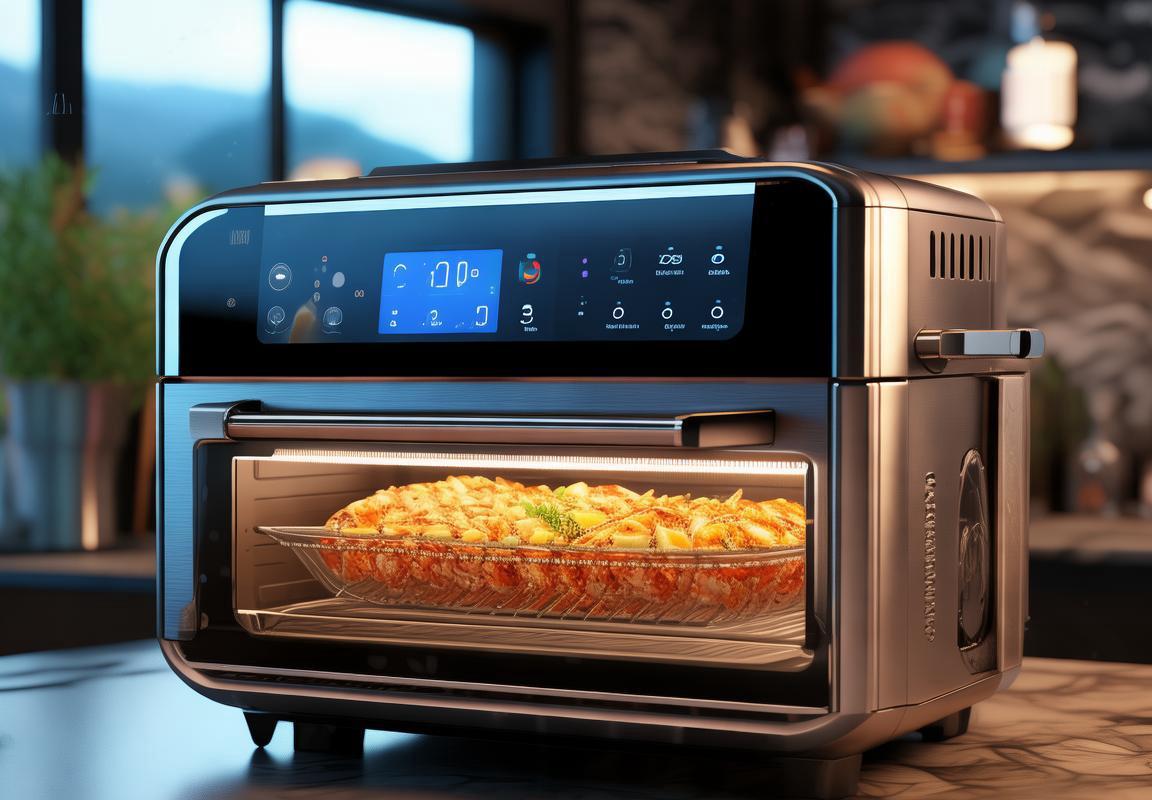
Innovation and Technology Integration
In recent years, the kitchen appliance industry has seen a remarkable surge in innovation and technology integration, transforming the way we approach cooking and home management. From smart ovens to automated dishwashers, the landscape of kitchen appliances is continually evolving. Here’s a glimpse into how these advancements are shaping the future of cooking and cleaning.
Smart ConnectivityOne of the most significant innovations in the kitchen appliance industry is the integration of smart connectivity. Devices such as refrigerators, stoves, and fryers are now equipped with Wi-Fi capabilities, allowing users to control them remotely through smartphones and tablets. This technology not only offers convenience but also enhances safety and energy efficiency, as appliances can be turned on or off and settings adjusted even when you’re away from home.
Energy EfficiencyEnergy consumption has become a major concern for consumers and manufacturers alike. As a result, there’s been a substantial push to create more energy-efficient kitchen appliances. High-altitude adapted fryer ovens, for instance, are designed to operate efficiently despite the reduced air pressure at higher elevations. These ovens often come with advanced heating elements and insulation that minimize energy loss and maintain consistent temperatures, saving both energy and money in the long run.
SustainabilitySustainability is at the forefront of the appliance industry’s innovation agenda. Companies are now focusing on designing appliances that are eco-friendly and have a minimal carbon footprint. This includes the use of recyclable materials, efficient water usage in dishwashers, and the reduction of harmful chemicals in the production process. For fryer ovens, the trend is toward more sustainable cooking methods, such as using induction technology, which is cleaner and more energy-efficient than traditional gas or electric methods.
Personalization and CustomizationToday’s consumers are looking for appliances that cater to their specific needs and preferences. The industry is responding by offering personalized and customizable features. For example, modern fryer ovens might come with programmable settings that allow users to tailor cooking times and temperatures to specific types of food or cooking styles. This level of customization not only ensures better results but also allows users to experiment with different cooking techniques and recipes.
Safety FeaturesSafety has always been a critical factor in kitchen appliance design, and advancements in technology have made it possible to incorporate even more robust safety features. High-altitude adapted fryer ovens, for instance, often include features like automatic shut-off if temperatures rise too high, ensuring that there’s less risk of fires or burns. Sensors and alarms that alert users to unusual operation or potential hazards are becoming standard, providing peace of mind and preventing accidents.
Interactive LearningAnother fascinating area of innovation is the integration of interactive learning into kitchen appliances. Modern ovens, for example, can offer recipe suggestions based on the ingredients available in the connected fridge or provide cooking tips and tricks to enhance culinary skills. This kind of appliance is essentially a virtual kitchen assistant, guiding users through the cooking process and offering a wealth of information to make meal preparation easier and more enjoyable.
Aesthetic and Ergonomic DesignThe aesthetics of kitchen appliances have also seen a transformation. Designers are now focusing on creating appliances that not only serve a functional purpose but also enhance the overall look of the kitchen. High-quality materials, sleek lines, and user-friendly interfaces are becoming the norm. Additionally, ergonomic designs are being introduced to make appliances easier to use, whether it’s a simple touch screen on a fryer oven or a handle that fits comfortably in the hand.
Custom Integration and the Smart KitchenThe ultimate goal for many manufacturers is to create a seamless, integrated experience that links various appliances within the kitchen. This means that your high-altitude adapted fryer oven can communicate with your smart fridge, microwave, and even your security system. This kind of custom integration is part of the broader trend toward the smart kitchen, where every device is interconnected, making the cooking process more efficient and intuitive.
As the kitchen appliance industry continues to innovate and integrate technology, we can expect to see even more sophisticated and user-friendly appliances that not only enhance our daily lives but also contribute to a more sustainable and efficient future.
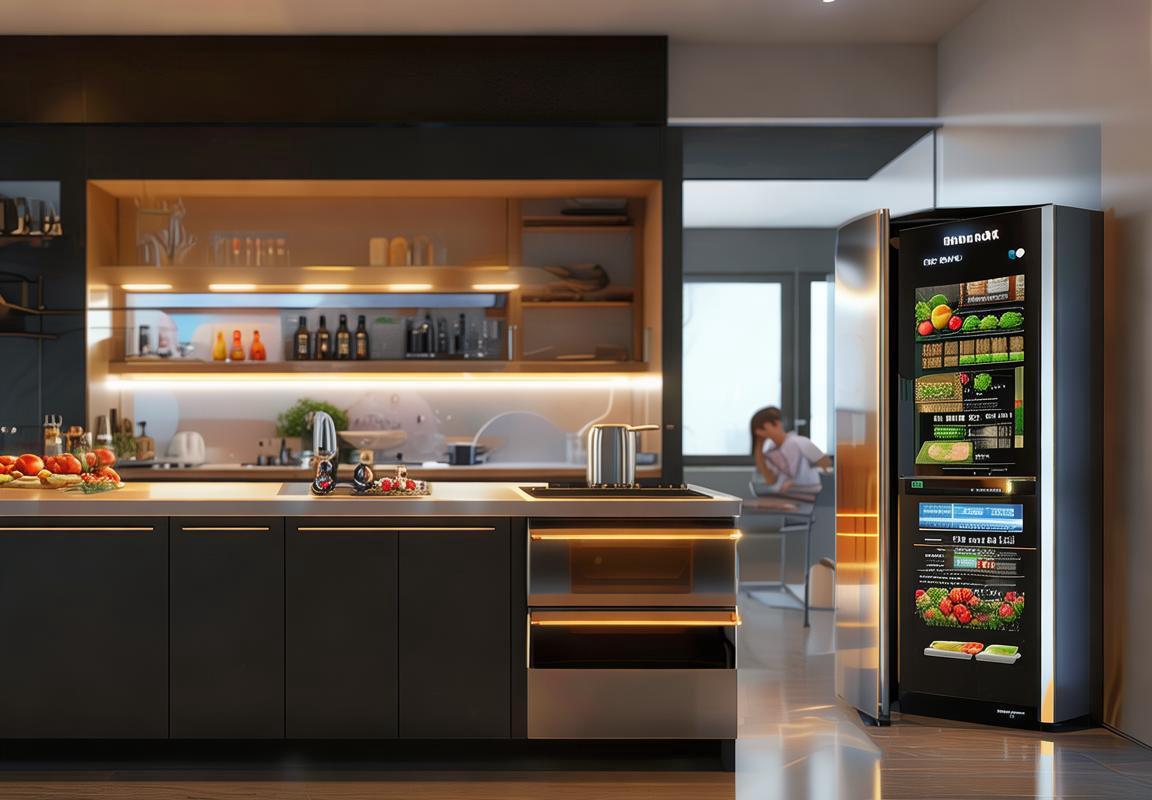
Case Studies: Successful High Altitude Fryer Oven Launches
In the realm of high altitude cooking, several innovative companies have successfully launched fryer ovens tailored to the unique needs of higher elevations. These case studies highlight the strategies and successes behind these product launches.
The launch of the “Altitude Master” fryer oven by Mountain Chef Appliances marked a significant milestone in the high altitude kitchen appliance market. This model was designed with precision to address the challenges of cooking at elevations above 8,000 feet. The oven’s ability to maintain consistent temperatures and its unique heat distribution system quickly garnered attention from outdoor enthusiasts and mountain lodges alike.
The “Peak Performer” fryer oven from Alpine Appliances was another standout launch. This oven featured a smart control panel that allowed users to adjust cooking times and temperatures based on the altitude setting. The case study revealed that the product’s ease of use and precise cooking capabilities were key factors in its success. Consumers praised the oven for its ability to produce crispy fried foods at high altitudes, where traditional ovens often fail.
A notable launch was the “Skyline” fryer oven by Sky Kitchen Innovations. This model was specifically designed for commercial kitchens in mountain resorts and campgrounds. The case study highlighted the oven’s durability and efficiency, which were crucial for these environments. The “Skyline” also came with a range of accessories, including a pressure regulator and altitude-specific cooking charts, making it a comprehensive solution for high-altitude cooking challenges.
Another successful launch was the “Mountain Mate” fryer oven from the eco-conscious brand GreenGourmet. This oven was not only designed to meet the cooking needs of high altitudes but also emphasized sustainability. The case study revealed that the oven’s use of renewable energy sources and its eco-friendly materials resonated with environmentally conscious consumers. The “Mountain Mate” also offered a range of cooking modes, from traditional frying to air frying, which expanded its appeal.
One of the most impressive launches was the “Summit Chef” fryer oven by ChefTech Appliances. This oven was the first of its kind to incorporate AI technology, allowing it to learn and adapt to the specific cooking needs of different altitudes. The case study showcased the oven’s ability to predict and adjust cooking times and temperatures, leading to perfect results every time. The “Summit Chef” also featured a built-in altitude sensor, ensuring that the oven’s settings were always optimized for the current elevation.
In the case of the “Mountain Whisper” fryer oven by Quiet Cooking Systems, the focus was on noise reduction and energy efficiency. The oven was designed for use in homes and small apartments, where noise levels and energy consumption are critical concerns. The case study highlighted the oven’s success in the market, with consumers appreciating its ability to cook delicious fried foods without disturbing the peace or draining resources.
These case studies illustrate the diverse approaches taken by companies to create high altitude adapted fryer ovens. From smart technology and eco-friendly design to user-friendly interfaces and comprehensive accessories, these launches have proven that there is a strong market demand for innovative solutions to high altitude cooking challenges. Each product has found its niche, from commercial kitchens to eco-conscious consumers, showcasing the versatility and potential of high altitude fryer ovens.
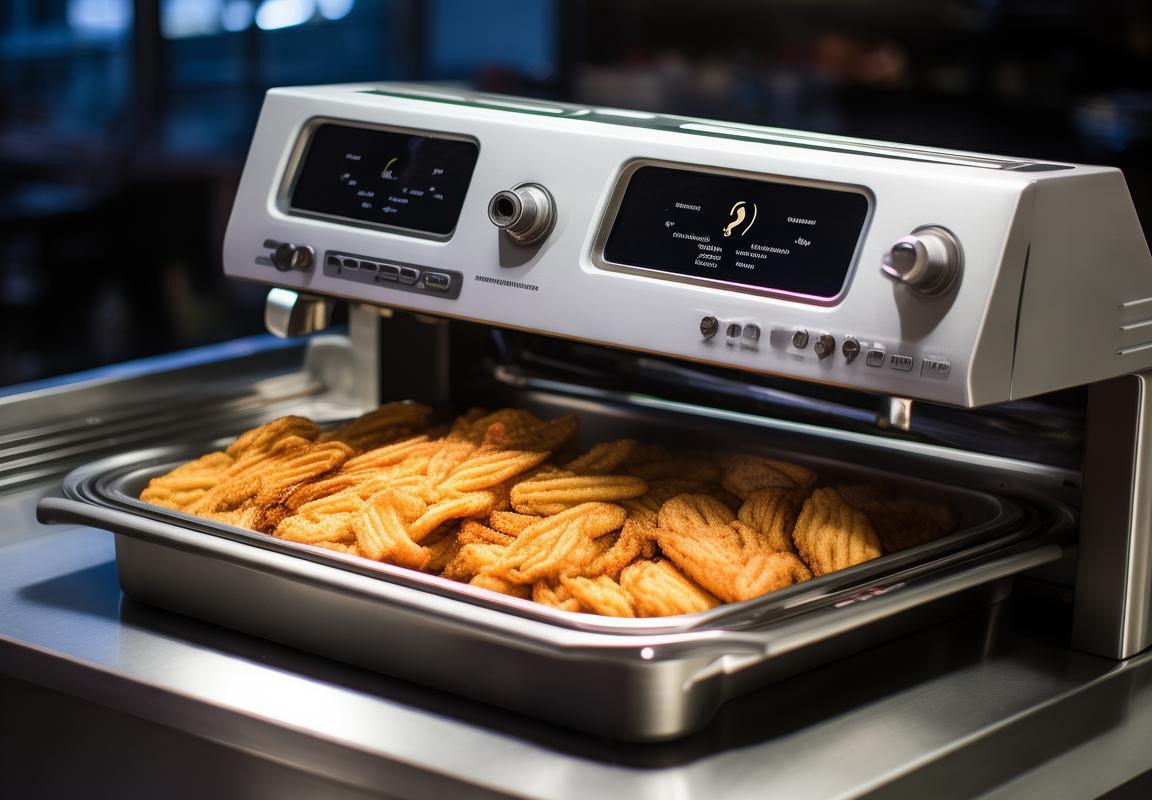
The Future Outlook for High Altitude Adapted Fryer Ovens
In the realm of high altitude cooking, the introduction of adapted fryer ovens has marked a significant evolution in kitchen technology. These specialized appliances have been crafted to tackle the unique challenges that come with cooking at elevated altitudes. Let’s delve into some of the notable case studies where these fryer ovens have been successfully launched, showcasing their impact and potential.
One such case study is the launch of the “Mountain Chef” fryer oven by a leading appliance manufacturer. Designed for use in homes and restaurants situated at altitudes of 8,000 feet and above, the Mountain Chef quickly gained traction. Its success can be attributed to several key factors. The oven’s ability to maintain consistent cooking temperatures, despite the lower atmospheric pressure, was a game-changer. The innovative insulation and heating elements allowed for more even cooking, ensuring that dishes like crispy fried chicken and fluffy pancakes were achievable at high altitudes.
Another standout launch was the “Altitude FryPro” by a small startup that focused on sustainable kitchen solutions. This fryer oven caught the attention of eco-conscious consumers and chefs alike. The Altitude FryPro was designed with a focus on energy efficiency and reduced emissions, which was particularly appealing in regions where environmental concerns are paramount. The oven’s ability to use less oil and cook more efficiently was a hit, leading to a growing market demand for this eco-friendly option.
The “Peak FryMaster” by a global kitchen appliance giant was another successful launch. This fryer oven was introduced with a range of features tailored to high altitude environments, including a programmable control panel and a built-in altitude sensor. The sensor adjusted the cooking time and temperature automatically, simplifying the cooking process for users who might not be as familiar with high altitude cooking. The Peak FryMaster also featured a sleek design that appealed to modern kitchens, making it a versatile choice for both residential and commercial use.
The success of these high altitude fryer oven launches can be attributed to several factors. Firstly, the appliances addressed a specific need in a niche market, making them highly sought after. Secondly, they incorporated innovative technology that not only improved the cooking experience but also made it more accessible to a wider audience. Lastly, the marketing strategies for these products were well-timed and effectively communicated the benefits to potential customers.
Looking ahead, the future outlook for high altitude adapted fryer ovens appears promising. As more people move to higher altitudes due to climate change or lifestyle choices, the demand for these specialized appliances is expected to rise. Additionally, as technology advances, we can anticipate further improvements in the efficiency and functionality of these fryer ovens.
One potential development is the integration of smart technology into these appliances. Imagine a fryer oven that can be controlled remotely via a smartphone app, allowing users to monitor and adjust cooking parameters while away from home. This level of connectivity could greatly enhance the convenience and user experience.
Furthermore, as sustainability continues to be a hot topic, we might see a surge in eco-friendly fryer oven models. These could include features like self-cleaning systems that reduce the need for harsh chemicals, or materials that are biodegradable or recyclable.
The future also holds potential for cross-industry collaborations. For instance, partnerships between kitchen appliance manufacturers and food technology companies could lead to the development of fryer ovens that not only cook food but also enhance its nutritional value or even contribute to food preservation techniques.
In conclusion, the success of high altitude fryer oven launches serves as a testament to the importance of addressing specific needs within niche markets. As the world’s population continues to move to higher altitudes and technology evolves, the future of high altitude adapted fryer ovens looks bright, with opportunities for innovation and growth in various directions.
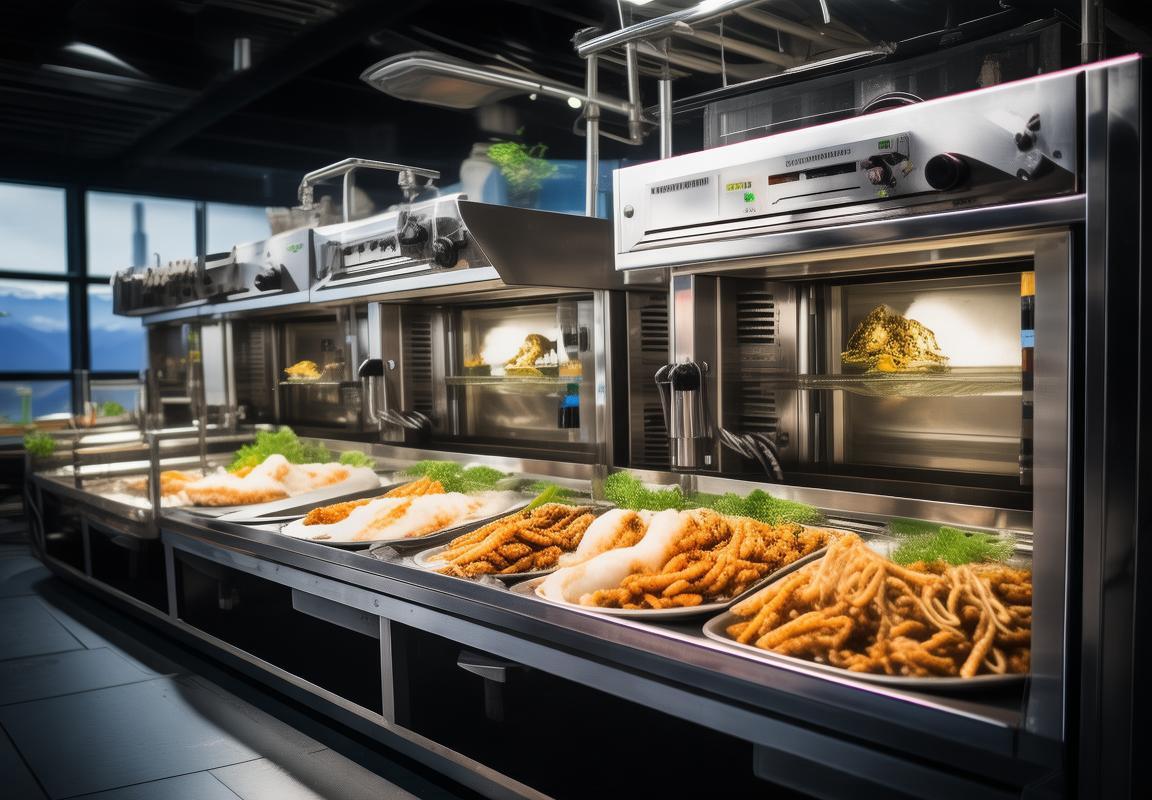
Conclusion: Embracing the High Altitude Kitchen Revolution
In embracing the high altitude kitchen revolution, we find ourselves at the cusp of a transformative era where the culinary landscape is reshaped by innovative solutions tailored to the unique demands of cooking at high altitudes. This revolution is not just about adapting to a different environment; it’s about enhancing the cooking experience, ensuring food quality, and preserving cultural traditions. Here are some key insights into what this revolution entails and why it’s poised to change the way we think about cooking in high-altitude regions.
The integration of smart technology in high-altitude adapted fryer ovens has been a game-changer. These appliances come equipped with sensors that monitor temperature and pressure, adjusting cooking times and settings to account for the thinner air and lower boiling points. This ensures that dishes are cooked to perfection, regardless of the altitude.
Culinary enthusiasts and professional chefs alike are embracing the precision and consistency that these fryer ovens offer. The ability to replicate recipes that are traditionally challenging to execute at high altitudes has opened up a world of possibilities for both home cooks and restaurateurs. This shift is fostering a new wave of creativity in the kitchen, as chefs experiment with ingredients and techniques that were once thought to be incompatible with high-altitude cooking.
The demand for high-altitude adapted appliances is on the rise, driven by the growing number of people living in mountainous regions and the increasing popularity of outdoor cooking and camping. As more individuals seek to enjoy their favorite meals in the great outdoors, the need for reliable and efficient cooking solutions becomes paramount. This surge in demand has sparked a competitive market, with manufacturers racing to innovate and capture a share of this burgeoning niche.
The success of high-altitude fryer ovens is not just a testament to technological advancement but also to the importance of understanding local needs and preferences. Case studies from regions like the Andes, the Rockies, and the Himalayas show that these ovens have become a staple in many homes and outdoor kitchens. They have not only improved the quality of life for those living at high altitudes but have also become a symbol of cultural pride and technological sophistication.
The future of high-altitude adapted fryer ovens looks bright, with several trends shaping the industry. One such trend is the focus on sustainability. As consumers become more environmentally conscious, manufacturers are responding by developing ovens that are energy-efficient and use renewable energy sources. This not only benefits the consumer but also contributes to a greener planet.
Another trend is the customization of these appliances to cater to specific regional cuisines. By incorporating local flavors and cooking methods, manufacturers are ensuring that high-altitude fryer ovens not only meet functional needs but also resonate with cultural identities. This approach is fostering a sense of community and pride among users, as they are able to cook dishes that are both authentic and convenient.
The integration of connectivity features is also a significant development. With the ability to connect to smartphones and tablets, users can monitor and control their ovens remotely. This is particularly useful for those who are camping or hiking and want to ensure their food is ready upon their return. It’s a blend of convenience and technology that is changing the way we approach outdoor cooking.
In conclusion, the high altitude kitchen revolution is more than just a trend; it’s a necessary evolution. As the world becomes more mobile and people seek to explore new environments, the ability to cook effectively at high altitudes becomes increasingly important. The success of high-altitude adapted fryer ovens is a testament to human ingenuity and the power of technology to enhance our daily lives. As we continue to innovate and adapt, the future of high-altitude cooking looks promising, promising a world where the joy of cooking is accessible to all, regardless of where they call home.